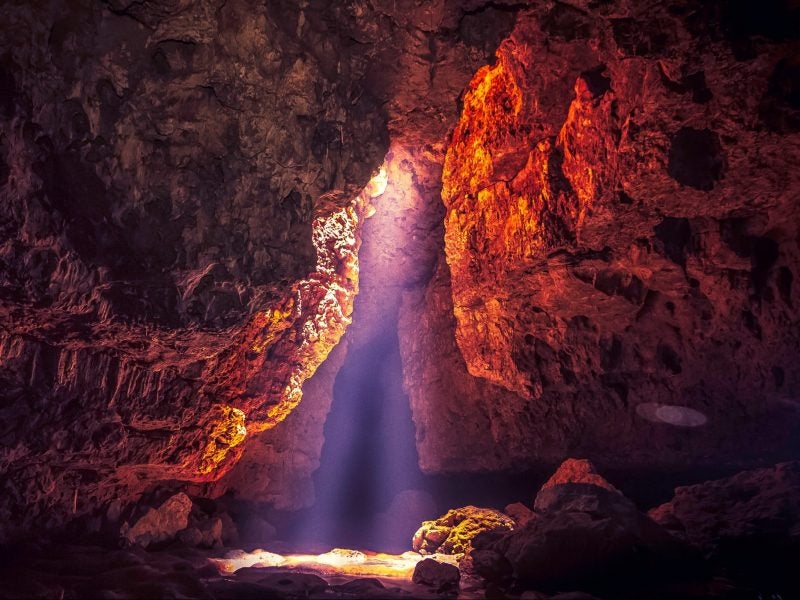
Block caving is a mining system which involves undermining an ore body and then allowing it to collapse under its own weight, a process that opens access to deeper deposits. Professor Fidelis Suorineni of the Nazarbayev University School of Mining and Geosciences in Kazakhstan explains that it works with the “creation of an undercut across the full orebody size which induces the orebody to naturally fragment under gravity”.
With the use of this technique expanding in the mining industry, Suorineni suggests that the growth in its popularity is being driven by the fact that more low-grade orebodies are being discovered while orebody grades continue to decline worldwide. Block caving has emerged as a cost-effective method of mining large, low-grade mineral deposits.
The role of block caving
Although the caving mining system was initially used for shallow orebodies, it has recently been applied at depths of 2km underground. According to Suorineni, “caving heights have also increased drastically from about 200m to 500m”, creating so-called ‘super caves’.
“There is insufficient experience caving in these environments,” he adds, which is a challenge for operators willing to apply the method at depth. As low-grade orebodies occur at depth, “mining companies will increasingly use the block caving mining system in order to be profitable,” Suorineni predicts.
In addition, the method has been used successfully as an alternative for developing new mines or extending the operation of open pits; for this reason it has been referred to as an underground version of open-pit mining.
Another added benefit of block caving is the large reduction in surface waste disposal. As opposed to open-pit mining, during which ratios of waste rock to ore often get higher, block caving reduces surficial land impacts. The amount of waste rock generated from underground methods like block caving, with waste placed in surface storage areas, is much lower.

US Tariffs are shifting - will you react or anticipate?
Don’t let policy changes catch you off guard. Stay proactive with real-time data and expert analysis.
By GlobalDataBlock caving: technical and financial challenges
Despite the numerous advantages of the method, it also comes with a set of important considerations.
For instance, Suorineni points at initial finance required for block caving as a major obstacle to operators. “The initial capital investment in the use of the mining system is high, but the operating cost is low which makes this mining system attractive,” he says.
After companies take the initial investment leap, the cost of block caving itself could work at about one-tenth of the corresponding cost of conventional mining methods, with production rates reaching 30,000 to 100,000 tons per day with no backfilling costs.
Suorineni shares that other challenges that come with block caving could include stalling of progressive caving, drawpoint blockage, reliable prediction of orebody caveability, cave propagation, and ore flow management.
The system also requires several hundreds of kilometres of development before production can ramp up. “With current development advance rates averaging only 3m to 5m per day, this is a bottleneck in the block caving mining system application,” Suorineni says. “This bottleneck has resulted in a re-thinking of the block caving mining system with experts now considering ‘non-undercut block caving’.”
Some major questions Suorineni advises companies to consider before employing the block caving system include: will the orebody cave; will fragmentation be acceptable; will the extraction level remain functionally stable; how can I increase development rate to ramp up production quickly; and how can I monitor the cave propagation to ensure continuous caving and avoid potential airblasts?
Why is block caving so important today?
As low-grade orebodies can only be mined profitably if they are big and mined with a low-cost mining system at high tonnages, Suorineni considers block caving’s efficiency as a major driver of interest.
Big mining companies are already capitalising on the potential of the method, with Rio Tinto extracting ore south of Ulaanbaatar, Mongolia; Resolution Copper mining copper in Arizona; and Newcrest exploring copper and gold at its Red Chris mine in New Wales, British Columbia.
Suorineni believes that with the increasing popularity of the method and emerging technologies such as artificial intelligence, virtual/augmented reality, robotics and automation, and big data, most of the bottlenecks involved in block caving will soon be eliminated.
He also suggests that space exploration technologies such as those used by Curiosity on Mars could be adapted to improve the efficiency of the system.
“Coupling emerging technologies with the block caving mining system, increasing frequency of low-grade orebody discoveries and its continuing popularity makes this the mining system of the future,” Suorineni concludes.
As block caving is the only underground method that can offer comparable open-pit production rates and operating costs, the technique is set for a strong future on the mining stage.



